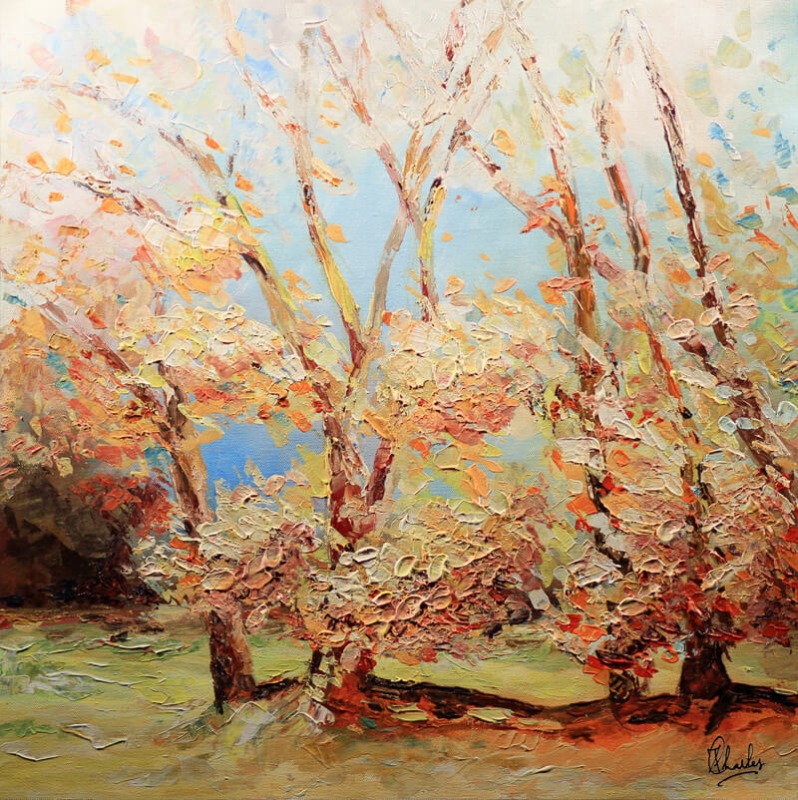How to Read Paintings: Discover the Unrevealed Beauty in Impressionistic Canvas Artwork

Table of Contents
Introduction
While reading or understanding a painting, the perspective of the reader is analyzed. Reading a picture is not very difficult, but people often see a painting through a casual attitude. The unfeeling attitude is why the observer doesn't understand the art.
Impressionism was a radical art movement that began in the 19th-century and dominated the art world for nearly 150 years. Moreover the legacy of Impressionism to illustrate the iconic movement’s profound impact on the history of art. The Impressionists faced harsh opposition from the conventional art community in France. The name of the style derives from the title of a Claude Monet work, Impression, soleil levant (Impression, Sunrise), which provoked the critic Louis Leroy to coin the term in a satirical review published in the Parisian newspaper and this gave birth to Impressionism.

What is impressionistic art?
Impressionistic art is a style in which the artist captures an outdoor image and paints it with such color and light so that when one looks at it, he/she can see the picturesque view or object come to life, and catch a glimpse of the actual sight.
In a nutshell, IMPRESSIONISM will comprise of Bright colours, bold brushstrokes and a rebellious spirit! The piece of ART captures the movement and life of what the artists saw, perceive and show it to us as if it were happening before our eyes. Claude Monet, Berthe Morisot, Camille Pissarro, Alfred Sisley, Auguste Renoir, Mary Cassatt and Edgar Degas are some of the prominent impressionist artists. The impressionists artists changed the status quo and they painted outdoors. Spontaneity and a casual quality to the work of Impressionists improvised over time.
Intricacies of impressionistic art
While the artists paint the pictures with many colors, the subjects are usually outdoor scenes and objects. The colors used in this type of art photo are very bright and vibrant. Hence, the art created is very bold. The best impressionist artists of the nineteenth century were Edouard Manet, Camille Pissaro, Berthe Morisot, Pierre Auguste Renoir, Edgar Degas, Alfred Sisley, and Claude Monet.
Edouard Manet was the very first individual to influence the development of impressions because, at that time, most artists were humiliated, and there were many restrictions imposed on them. Manet always wanted artists to have the freedom to paint, whatever they want, and hence he started to paint every object.
The French countryside fascinated Pissaro and Sisley, so they began to paint the river scenes, and the scenic beauty of nature. While other painters painted, ballet dancers, horse races, and women doing daily chores.
Impressionists created a different world through their work on canvas because their work did not stick to any tradition, religion, or mythology. All the real-life landscapes are portrayed so beautifully that idealism is seen nowhere, and the views represented have a meticulous finish.
Hence, Impressionist artwork covers all types of art, be it any small moments like sunrise or any significant event. Later, Impressionist art gave birth to many other artworks like Pointillism. This artwork gave the viewer a mixed perception of shimmering and grainy effect. That's the reason why impressionists gained lots of popularity for their work and are to date, admired by most famous artists.
As Impressionists risked everything and broke free from the tradition, they faced criticism and negative remarks. However, their creativity and dedication finally paid off because the paintings depicted the modern way of life. Although they struggled, living amidst poverty and hostility, they kept persevering and were rewarded with the recognition they deserved.

Defining Characteristics / Techniques of the Impressionists
Since its conception, Impressionism has been defined by a set of characteristics. These include painterly brushwork, distinctive colors, depictions of common subject matter, a focus on light, and compositions inspired by photography.
Painterly Thick Brushstrokes
Impressionists laid great stress on the effects of light in their paintings. In order to capture the spirit of the object rather than the details of the subject, they preferred to use short, thick strokes of paint. This method of quick applying of brush strokes enhances the painterly illusion of movement and thereby providing spontaneity. Painterly brushwork is Impressionism's most recognizable trait.
The meticulously blended brushstrokes distinctive marks capture the ephemeral, fleeting nature of moments in time, and allow artists to experiment with color and the ways in which different tones interact on the canvas.
Distinctive Color Palette
A thick characteristic application of paint designates that even reflections on the surface of water appear to be as significant as anyobject in a scene. In order to include pure and intense colours, the impressionists decided to lighten their colour palettes. This method is particularly apparent in Impressionist depictions of shadows and snow, which, respectively, are never simply black and white.
Impressionist paintings also often feature neutral color schemes with vivid pops of red that both draw in the eye and add balance to compositions.
Depictions of common subject matter
Another avant-garde aspect of Impressionism is the everyday nature of its subjects. Typical content portrayed in Impressionist paintings includes still life depictions, landscapes, portraits of friends and family, and modern city scenes—a far cry from the historical, mythological, and allegorical scenes found in traditional French paintings. They moved from the normal indoors to broad light outdoors.
Focus on Light
Many Impressionist artists—most notably, Claude Monet - had a penchant for painting en plein air, or outside. With this approach, artists were able to closely study the light and its effects on landscapes, buildings, and other outdoor sights.
“For me,” Monet said, “a landscape does not exist in its own right, since its appearance changes at every moment; but the surrounding atmosphere brings it to life—the light and the air which vary continually. For me, it is only the surrounding atmosphere which gives subjects their true value.”
Conclusion
While paintings have a lot to express, one should have distinct eyesight to understand all that a painting tries to convey. Art became free of various restrictions because of Impressionism, and the beauty of nature also found a more vibrant and genuine reflection in artworks. Through art, artists express their creativity, and impressionistic painting is an excellent way to express love towards every minimal and small nitty-gritties of life. By reinterpreting and reimagining the movement’s iconic aesthetic, these artists invite present-day audiences to see Impressionism in a new light—literally.
